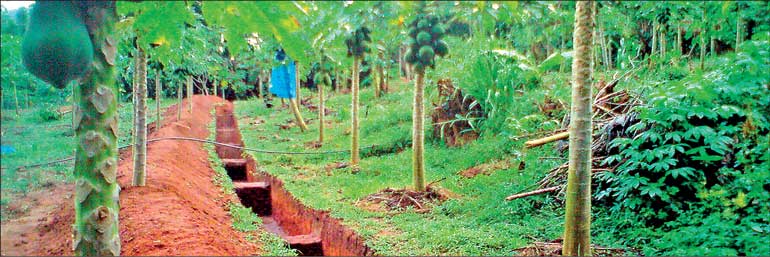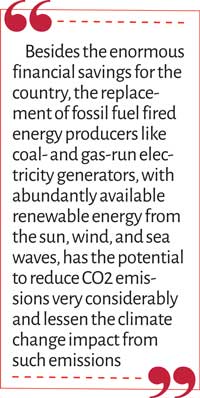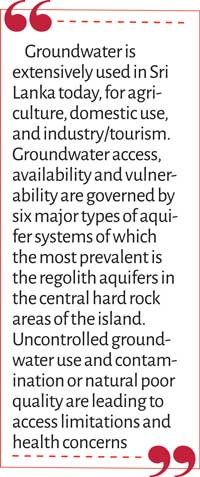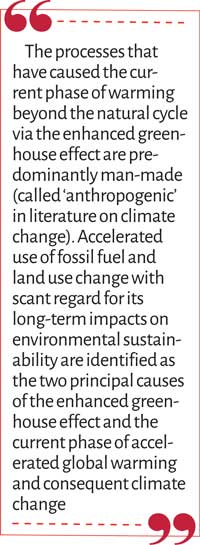A Brief Colonial History Of Ceylon(SriLanka)
Sri Lanka: One Island Two Nations
A Brief Colonial History Of Ceylon(SriLanka)
Sri Lanka: One Island Two Nations
(Full Story)
Search This Blog
Back to 500BC.
==========================
Thiranjala Weerasinghe sj.- One Island Two Nations
?????????????????????????????????????????????????Sunday, May 8, 2022
A futuristic, sustainable land management policy for Sri Lanka – Part 2

A futuristic, sustainable policy on land management is central to controlling future greenhouse gas emissions to maintain atmospheric temperatures and the climate within limits favourable for the earth’s essential resources such as biodiversity
Friday, 6 May 2022
Are we using land effectively and efficiently?
Land, using the wider context of land, employed for key economic areas and returns on investments must be assessed. Number of people employed and prospects arising from mechanisation, sociological changes (such as those arising from educational opportunities in the plantation sector and elsewhere), increasing employment opportunities overseas, migration, etc., are factors that need to be considered. Some areas that are vital to assessing the efficiency and effective use of land such as the following will be looked at in more detail in a subsequent article.
must be assessed. Number of people employed and prospects arising from mechanisation, sociological changes (such as those arising from educational opportunities in the plantation sector and elsewhere), increasing employment opportunities overseas, migration, etc., are factors that need to be considered. Some areas that are vital to assessing the efficiency and effective use of land such as the following will be looked at in more detail in a subsequent article.
a. Arable land management based on producing increased harvests using less land
b. Crop diversification – opportunities and challenges
c. Inter cropping in existing land used especially for coconut and rubber
d. Unproductive existing arable land to be used for alternate agricultural and timber plantations
e. The long-term economic viability of existing tea, rubber and coconut land use assessed, and uneconomic, and potentially uneconomic land used for other crops
f. Alternate vegetable growing mechanisms such as hydroponic methodology, urban agriculture, temperature, humidity control mechanisms such as solar powered greenhouses
g. Maritime fisheries and inland fisheries, their sustainability, encroachments, poaching by external elements
h. Distribution efficiencies and fair prices being paid to producers
Water resources and the state of water quality
A simple opening line might be to ask the question, “What use is land without water and water with doubtful quality.” The simple answer must be that it is of no use. Another question in relation to water is whether the country has been using this resource to provide optimum economic returns in a sustainable manner. As stated earlier, the ancient rulers of the country seemed to have had a far better understanding of the criticality of water resources for the very survival of the country and they have amply demonstrated this.
The publication titled ‘The Water Environment Partnership in Asia (WEPA)’ (http://www.wepa-db.net/policies/state/srilanka/overview.htm) states the following in regard to the state of water quality: “It is difficult to comprehend the trend of water quality in public water bodies due to lack of monitoring data.” However, the Sri Lanka National Water Development Report (2006) pointed out a variety of quality concerns in Sri Lanka, including contamination by nitrate and bacteria in underground and surface waters due to poor sanitation and untreated wastewater or insufficient wastewater treatment, toxic chemicals from industrial and agricultural activities, and eutrophication in lakes/reservoirs (UNESCO and MoAIMD 2006).
The report covers deterioration of water quality in rivers, lakes and reservoirs, coastal water, and ground water. This especially important topic will be discussed in detail in a later article. Suffice to say at this stage that deterioration of water quality has been reported in some rivers, lakes and reservoirs, coastal water, and ground water. In all or most instances, the excessive use of inorganic fertilisers, weedicides and pesticides in some areas, industrial effluents polluting water sources have been reported.
ground water. This especially important topic will be discussed in detail in a later article. Suffice to say at this stage that deterioration of water quality has been reported in some rivers, lakes and reservoirs, coastal water, and ground water. In all or most instances, the excessive use of inorganic fertilisers, weedicides and pesticides in some areas, industrial effluents polluting water sources have been reported.
Water tables in Sri Lanka
Groundwater is extensively used in Sri Lanka today, for agriculture, domestic use, and industry/tourism. Groundwater access, availability and vulnerability are governed by six major types of aquifer systems of which the most prevalent is the regolith aquifers in the central hard rock areas of the island. Uncontrolled groundwater use and contamination or natural poor quality are leading to access limitations and health concerns.
The tsunami severely affected groundwater in the coastal areas and functioned as a wake-up call to further emphasise the importance of groundwater for life-supporting functions. Despite an emerging awareness, groundwater management is in its infancy, with the attitude of groundwater development still not converted into an approach of active management. The role of groundwater in achieving sustainable development and in the development of appropriate water management institutions needs to be highlighted and specifically addressed in policy discussions.
Biodiversity and environment protection, waste management and renewable energy development
Why is biodiversity important?
Biodiversity is a complex subject. One very tangible role of biodiversity within an ecosystem is to provide the environment and the mechanisms for essential activities such as pollination, seed dispersal, climate regulation, water purification, nutrient cycling, control of agricultural pests and a source of raw material for medicinal and therapeutic products.
material for medicinal and therapeutic products.
These are essential for the wellbeing of not just human beings but, all other forms of life including plant life. In recent times, there have been many research studies done which indicate the drop in numbers of bees, which has a direct relationship to pollination or the lack of it. Biodiversity is recognised as a composite system, which if healthy, facilitates the propagation of species, both plants and animals and the continuation of the food chain.
A negative impact on biodiversity in an ecosystem will make that ecosystem progressively sterile, leading to its eventual demise, and with it, the demise of the animal and plant species in such an ecosystem. Biodiversity also has many non-tangible characteristics as well.
Biodiversity has cultural value to humans as well, for spiritual or religious reasons. An ecosystem rich in biodiversity can also be seen as something that has an inalienable right to exist for its own sake and one with a value system where different species of plants and animals’ live side by side with the rest of nature. Biodiversity can shape who we are, our values and our relationships with each other, and our social norms. These have a direct relationship to our responsibility for, and connection with each other and the environment. These different values placed on biodiversity are important because they can influence the conservation decisions people make every day. Suffice to say the lack of these values have and will lead to rapid ecosystem change and massive loss of biodiversity across the planet. Major direct threats to biodiversity include habitat loss and fragmentation, unsustainable resource use, invasive species, pollution, and global climate change.
Biodiversity is therefore at the centre of environment protection. One drastic consequence of not protecting the environment is climate change and the resulting rise in global temperatures, melting of ice caps in the North and South Poles, rise in sea water levels because of such global warming, excessive droughts and rain fall, forest fires and similar catastrophes that directly affect all forms of life on the planet earth.
on the planet earth.
Proliferation of waste
The Environment Foundation Ltd. states: “Sri Lanka generates 7,000 MT of solid waste per day with the Western Province accounting for nearly 60% of waste generation. Each person generates an average of 1-0.4 kg of waste per day. According to the Waste Management Authority and the Central Environmental Authority, only half of the waste generated is collected. For the last 20 years or so, government institutions have attempted to figure out the best waste management strategy for the country. While some policies and actions supported sanitary landfills, some initiatives were driven towards waste to energy projects.
In 2008, CEA initiated a 10-year Waste Management Program named ‘Pilisaru Program’ with the goal of ‘Waste Free Sri Lanka by 2018’. Unfortunately, the lack of a unified coherent strategy has led to inconsistent and ineffective practices. The failure to address this escalating issue in a timely manner resulted in unsanitary eye sores in Karadiyana, Bluemendhal, Meethotamulla, Kolonnawa, and the degradation of wetlands, coastline, rivers, and other streams which become dumping sites for plastic and polythene waste, and other mixed waste.
With mountains of garbage accumulating at Bluemendhal and Meethotamulla, on 14 April in 2017, Sinhala-Hindu New Year dawned with the burst of Meethotamulla garbage mountain, killing 30 people and destroying more than 100 houses”.
Solid waste, including what flows into the sea and rivers and liquid waste such as industrial effluents that too pollute sea and river water, are a major threat to the environment in the country.
Renewable energy
Besides the enormous financial savings for the country, the replacement of fossil fuel fired energy producers like coal- and gas-run electricity generators, with abundantly available renewable energy from the sun, wind, and sea waves, has the potential to reduce CO2 emissions very considerably and lessen the climate change impact from such emissions. This topic will be covered in substantial detail in a subsequent article.
Climate change: An over-arching phenomenon influencing all facets of land management
Since its inception nearly 4½ billion years ago, the earth’s climate has always undergone change. The most prominent of these has been the alternating cycles of cold (the so-called ‘ice ages’ or ‘glacial’) and warm (called ‘inter-glacial’) periods. Currently, we are in a warm phase of this cycle. A characteristic feature of these cycles has been their very long-time scale with several thousand years in-between the cold and warm periods. For example, the last ‘ice age’ came to an end about 20,000 years ago. Until recently, the earth, its natural systems (for example the water cycle) and biodiversity have been able to adjust and evolve through this slow process of natural climate change.
However, the challenge that the earth, its natural systems, its biodiversity and most importantly, the mankind, faces currently is that this natural cycle has accelerated beyond the limits within which it had operated so far. For example, the acceleration of emissions of greenhouse gases to the earth’s atmosphere, since the beginning of the ‘Industrial Revolution’ in the mid-18th century has increased the atmospheric concentration of carbon dioxide, the principal greenhouse gas, from 280 ppm in 1750 to the current level of 410 ppm. This increase, which has occurred within the space of 260 years, a very short period in terms of the earth’s history and climate, is unprecedented during the last 600,000 years. This has pushed the earth’s temperatures and its climate system to the very limits of its natural cycle and at times beyond.  Melting of polar ice caps and permafrost, increased frequency of extreme climatic events such as droughts, floods, heat waves and cold periods are some of the tangible manifestations of what is called the ‘enhanced greenhouse effect’ that triggers climate change as we experience today. Large scale fires that raged across forests and bushland in the Amazon basin and Australia in the recent past, is a stark demonstration of how climate change impacts biodiversity and land’s essential resources. The natural cycle of cold and warm periods caused by the natural variation of atmospheric carbon dioxide (called the ‘natural greenhouse effect’) is beyond mankind’s control.
Melting of polar ice caps and permafrost, increased frequency of extreme climatic events such as droughts, floods, heat waves and cold periods are some of the tangible manifestations of what is called the ‘enhanced greenhouse effect’ that triggers climate change as we experience today. Large scale fires that raged across forests and bushland in the Amazon basin and Australia in the recent past, is a stark demonstration of how climate change impacts biodiversity and land’s essential resources. The natural cycle of cold and warm periods caused by the natural variation of atmospheric carbon dioxide (called the ‘natural greenhouse effect’) is beyond mankind’s control.
However, the processes that have caused the current phase of warming beyond the natural cycle via the enhanced greenhouse effect are predominantly man-made (called ‘anthropogenic’ in literature on climate change). Accelerated use of fossil fuel and land use change with scant regard for its long-term impacts on environmental sustainability are identified as the two principal causes of the enhanced greenhouse effect and the current phase of accelerated global warming and consequent climate change.
An IPCC Special Report on Climate Change, Desertification, Land Degradation, Sustainable Land Management, Food Security, and Greenhouse Gas Fluxes in Terrestrial Ecosystems* underscores the important role that land plays in the climate system and the ways in which sustainably managing land resources can help address climate change. Given that agriculture, forestry, and other land-use changes are responsible for about 23% of global greenhouse gas (GHG) emissions, radical changes are required not only in the more obvious sectors, such as energy and transport, but in the way land is used as well. The report cites the need to change the ways food is produced and land is managed to cut emissions and keep warming to below 1.5°C above preindustrial levels. *https://sdg.iisd.org/news/sustainable-land-management-critical-to-combating-climate-change-ipcc-special-report/
Therefore, a futuristic, sustainable policy on land management is central to controlling future greenhouse gas emissions to maintain atmospheric temperatures and the climate within limits favourable for the earth’s essential resources such as biodiversity.
This topic and its related aspect will be discussed in detail in a future article in this series.
(Raj Gonsalkorale, MBA, is an International Management Consultant, Janendra De Costa, BSc (Agric) PhD, a Senior Professor and Chair of Crop Science, Faculty of Agriculture, University of Peradeniya, and Vijith Gunawardena, BA, a Land Management Practitioner.)

%20(1)%20(3)%20(1)%20(1).png)